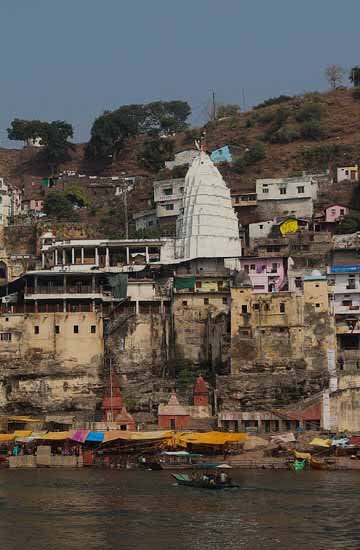Mandu or Mandavgad is a ruined city, which is celebrated for its fine architecture, created during the Malwa period. Located in the Dhar district of Western Madhya Pradesh, Central India, Mandu provides various impressive views of lakes, waterfalls, and incredible monuments, to lure tourists to visit the region.
There are several places to visit in Mandu like palaces, mosques, Jain temples of the 14th century and other buildings and the oldest mosque here dates from 1405. The finest of them all is Jama Masjid, which is a unique piece of Pashtun architecture. The strategic position of Mandu and its rich cultural heritage makes it one of the most popular tourist destinations in Madhya Pradesh.
The incredible Afghan architecture and amazing baobab trees, originally from Africa, are important attractions that boost Tourism in Mandu. Some of the buildings in this region are recognized by UNESCO World Heritage Site, including Rupmati's Pavilion, which is one of the most popular tourist attractions in Mandu.
Dhar is a historic city, laced in the legends of kings and battles. Ancient structures, standing tall for centuries, grace the cityscape and transport you back to another era as you walk through the narrow dusty lanes admiring these historical marvels.
Located in the Malwa region of Madhya Pradesh, Dhar has witnessed the glorious rules of many rulers. It is believed to have been established in the 1st century BC by the Rajput Parmar King Vikramaditya. From the Paramars and Khalji Sultans to Mughals and Marathas, each of the rulers left their mark in the city. Today, Dhar stands as a colorful blend of different cultures, luring travelers with its splendid heritage.
Dhar is a history lover’s paradise. The Dhar fort is the city’s most iconic attraction. A beautiful sandstone structure perched atop a hill; it is believed to be built by Muhammad bin Tughluq, with the timely additions to its features by each ruler. It also houses a museum displaying the remains of the several temples and other structures within the fortress that have degenerated over time. The Jheera Bagh Palace built in the 19th century was the royal abode of the Pawar rulers. It is worth visiting as a fine specimen of modern Indian architecture. For those interested in archeological attractions, the Bagh caves, situated at a small distance from the main city, are a must-visit site. This group of nine caves is especially popular for their rock-cut carvings and artistic wall paintings. Other important attractions in the city include several ancient mosques, Cenotaphs and some archeological museums.
Shop at the local markets for fabrics accentuated with the traditional Bagh print works and other handicrafts, including bead works, the Pithora paintings, and teak artifacts.


